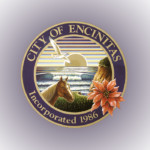The day began with mud and ended with slime.
In between, my friend, Wanda, and I took in the pools, the pampering and nachos piled high.
This, in summary, was our day at Glen Ivy Hot Springs, a day spa situated on a leafy, landscaped slope in the foothills of the Santa Ana Mountains, south of Corona and just east of Interstate 15.

I had not visited the spa for about 25 years and my memory offers a much more rustic experience than this recent one. Back then it was, shall we say, a place of potential. Today, however, Glen Ivy has reached that potential and guests will find a markedly different experience.
Luckily, though, the spa hasn’t lost that casual ambiance, and visitors can choose their level of luxury.
There are 19 pools of varying sizes and temperatures situated among the live oaks, palms and birds of paradise. Upon your first visit, a map is a must. You’ll need it to navigate the property’s maze of sidewalks that take guests to spa treatment rooms, pools, restaurants, bars and mud and slime immersions.
Until 1880, Glen Ivy was known as Temescal Sulfur Springs, so-named for the Spanish word that means sweat lodge. But long before Europeans discovered these hot springs, Native Americans believed the waters had healing powers and built sweat lodges for purification ceremonies.
The arrival of the Spanish and later the onset of the California Gold Rush brought thousands to the state quickly. As area historians like to point out, Abraham Lincoln was running for president when the “powers of the waters” were first advertised to Los Angelinos.
Glen Ivy acquired its current moniker in the late 1800s. It was named by the owner’s English wife, possibly because in Britain, a canyon is known as a glen, and there was an abundance of ivy growing in the area. Through the years and various owners, the spa has expanded, evolved, and had its ups and downs.
But in 2016, GOCO Hospitality acquired Glen Ivy and infused new life. There are now plans to build a hotel.
Our visit began on a brisk February weekday, so we were grateful for the heavy velour robes that guests wear everywhere — even while lunching in the Ivy Kitchen. This indoor-outdoor eatery offers plenty of garden-fresh entrees, some made with fruit and herbs grown in the nearby garden, and $5 will buy unlimited coffee refills.
Before our massages, we visited the spa’s signature mud pool, where slathering on the copper-colored mud brings back childhood memories. Then it was off to the baking cave, a welcome destination on this chilly day. Rinsing is usually done in a nearby cool shower, but the weather had us beelining back to the warm pool.
After our mud bath, the day’s itinerary played out with massages and facials, lunch in the Ivy Kitchen, and a visit to the Grotto, a great way to end our visit. We entered the first room where painters slopped on green goo. The extra was dumped into our hands as we passed into the next chamber — a warm room that mimics an underground cave or grotto. We finished applying the goo and sat for 15 minutes. Finally, we rinsed off in warm showers, and enjoyed the promised silky skin.
Glen Ivy Hot Springs is a 60- to 90-minute drive from North County.
Admission is $49 weekdays; $68 weekends and holidays. Included are the use of all pools and the mud bath. Other services are extra and reservations are recommended. There is a charge for robes or you can bring your own. Visit www.glenivy.com or call 888-GLENIVY (453-6489) for more information.
For more photos and commentary, visit www.facebook.com/elouise.ondash.



